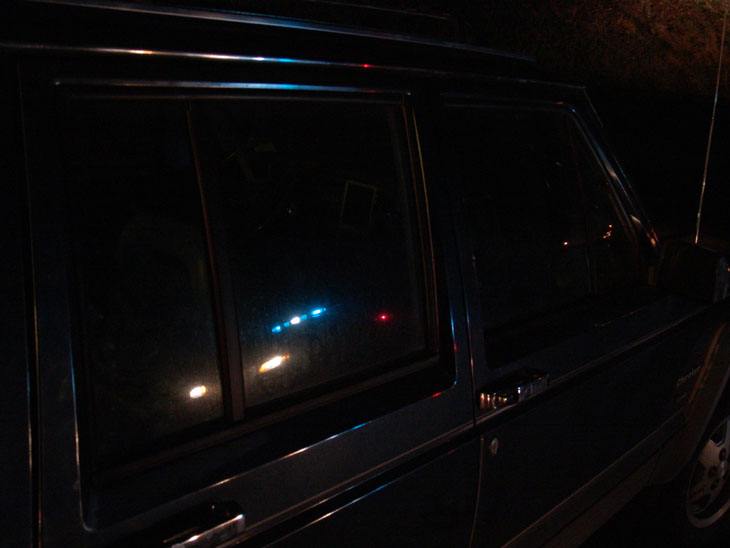Occam’s razor is a proverb, if you will, that underlies critical thinking and the consideration of alternatives. In its most commonly used form, it reads rather simply: If there are multiple explanations for some observed phenomenon, the simplest one is likely the most accurate. As can be seen from that link, however, this is paraphrasing. It’s not exactly a law of probability, but instead a reminder that elaborate circumstances rarely exist in nature, and when they do, they’re usually obviously elaborate – the evidence of their complexity will be clear, and not mistaken for something simpler.
I don’t find the proverb itself terribly useful, but it serves as a starting point for something a bit more important to critical thinking. I don’t know if it has a name or not – considering that this is how philosophers justify their existence, it probably does – but in essence, it’s the idea that every explanation bears its own consequences. This is better illustrated by an example.
People who support the idea of a US government conspiracy behind the attack on the World Trade towers on 9/11 maintain that there is compelling evidence that the planes could not have caused the collapse, and that signs of controlled demolition exist. When we apply the idea of consequence to this, we start asking several pertinent questions:
Why would the government do this? How could this be accomplished and kept secret? What, exactly, is the evidence in support of this? What, exactly, is the evidence against it? Can the evidence for either be interpreted in more ways than one?
These cannot be considered unreasonable questions by any stretch, and in fact, our judicial system relies on exactly this type of examination. Virtually every court case requires the demonstration (aligned with the questions above) of motive, opportunity, means, and being beyond reasonable doubt. It also underpins the scientific method, where a firm conclusion (which is, again, defined as “beyond reasonable doubt”) is only reached by eliminating as many other options as possible.
From a skeptical standpoint, the goal is not to automatically doubt any explanation, but to open the door to questions and seek support for any particular conclusion. If A is the case, then we should expect B and C to follow. If B and C are missing, A is thrown into question. With this rides another aspect, where A may lead to B, but so might Q and J; in order to be comfortable with only one explanation, the others must be ruled out somehow. This aspect of logic is routinely ignored when statistics are quoted, where rising intelligence and rising housing costs are considered connected in some way because they both rise. My example is silly, but this kind of mindless comparison is used far too frequently.
Applying this to our 9/11 conspiracy claim (it doesn’t qualify as a theory,) we have to determine useful answers to the questions listed above. Some of them, such as how the government could have kept it secret and how they could have mined the incredibly busy buildings with demolition charges without anyone noticing, already start to strain explanatory scenarios. Moreover, neither one culminated with the collapse of the buildings, but need to be maintained in secrecy, even to this day, and thus require a support structure that must continue through changing administrations. And there had to be a purpose to all of these shenanigans, which supposedly was to goad us into war with Iraq. The fact that the ‘pat explanation’ of this being Al Qaeda’s doing had nothing to do with Iraq, wasn’t sufficient to convince Congress, and wasn’t needed anyway since Bush simply pushed the war through without them, all make the ‘motive’ part rather lame.
Then, when we look at the evidence, we find such marvelous things as offhand comments made by firefighters (during a massive disaster,) puffs of ‘smoke’ (supposedly demolition charges) from a 200,000 cubic meter office building already in the process of collapse (we have to assume, I guess, that the dust clouds that covered dozens of city blocks were also demolition charges, and not caused by displaced air,) and that jet fuel does not ignite at a high enough temperature to melt structural steel. The last is the only one that seems to have a smidgen of science behind it, in that someone actually looked up flashpoints. Perhaps it would have been nice if they had progressed beyond the smidgen, though, or even just remembered that blacksmiths hammering horseshoes are not working with iron that is melted, but merely softened for pliability, and that the furnaces to accomplish this are fired by fuels with a lower flashpoint than the melting point of iron, too. Flashpoint refers to ignition, not resulting heat, which depends on the enclosure and supply of fuel. Yet, these little bits of highly questionable ‘evidence’ are claimed to support the vast idea of the conspiracy.
It is important, in fact vital, to ask if the evidence is solid, incapable of being misconstrued or misinterpreted, before even embarking on scenarios that might support such evidence. Can the observed traits be explained by means other than the initial posits? In the case of the puffs of smoke, supposedly from ‘squibs’ (explosive charges,) there are countless other possibilities, especially since the collapse of such huge buildings would have required several hundred charges, and they would have detonated before the collapse began. We’ve already addressed the jet fuel issue, and it could be pointed out that having the buildings fall almost immediately after impact would have made more sense to most viewers, not to mention keeping a million different media cameras off of the collapse. The collapse of the third building, Seven World Trade Center, should have occurred commensurate with the destruction of the twin towers – there is no earthly reason to let it remain standing for the entire day, nor for any ‘responsible party’ to utter the supposedly damning comment captured by news crews. The claims that the damage was insufficient to bring down the building are trashed by seeing the photos of the damaged side of the building, where the North Tower debris ripped through perhaps 20 floors, not the side opposite, which is the only side that the conspiracists ever show.
Which is another point in itself. All too often, when conspiracy claims are made and the supporting evidence presented, it takes little effort to find that such evidence is not understood, poorly presented, or outright edited – but it takes the motivation to look for it. Taking any claim on faith, no matter what side, is exceptionally uncritical – there is no method of ensuring that any source of information cannot be wrong, nor reason to believe such a thing. And it says an awful lot that most conspiracies throughout the ages only survive by being selective about evidence. Claims that the cryptic line, “We’re going to pull it,” is demolition jargon turn out to be completely false, and photos showing how strong the building was before collapse should not be solely of the undamaged side. The same goes for things like the Kennedy assassination, where a faint haze in one photo and a witness’ claim that the gunshots came from the grassy knoll are used, totally ignoring the countless witnesses who claim the shots came from the book repository, including those that saw someone up there. Witnesses that saw no aircraft anti-collision strobes from the ‘mysterious light in the sky’ do not magically override those that actually did see the strobes.
Going yet further with the application of critical thinking with our first example, we can imagine ourselves as the government trying to spark a war, and think of what kind of apparatus would be sufficient. Considering that the towers had already been attacked earlier by a simple car bomb, it seems rather elaborate to switch to hijacked airliners – an explosion at ground level would fit the planned demolition scenario far easier. Even if sold on the aircraft idea, a cargo plane with a small nuclear device would have been tons more effective in communicating the threat of Al Qaeda/Iraq/whatever, and not subject to passenger interference either. The construction workers that reinforced the Pentagon months before the attack would have had a legitimate excuse to be deep in the bowels of the building planting explosives, and could have done far more damage to the building than what actually occurred. As a conspiracy, it’s actually incredibly inept.
That’s how Occam’s Razor is wielded. As explanatory scenarios get more elaborate, they require a supporting structure of details, that we either should be able to find easily or must have explanations why we do not. Those explanations themselves must also be plausible, and have supporting evidence or good reasons why no such thing is available. The very first part of the claim – that the US government (or some faction within) planned it all – is an attempt to explain how the buildings could collapse if not because of the planes, but lacks any kind of direct evidence at all. Everything related to it is simply wild speculation about how and why, a supposition just to try and patch the very first holes in the conspiracy claim, but bearing nothing at all to bolster it. Something of this nature would be huge, and require untold hundreds or thousands of accomplices – in other words, a structure of vast proportions that is still completely secret. To maintain this as a plausible scenario, one must create more and more elaborate circumstances to explain away the total lack of evidence that could lead anyone to suspect it in the first place. It’s not actually possible to keep building a structure on the scaffolds of the next structure – somewhere in there must be a foundation.
Even science operates with this idea constantly, as scientists test posits through the consequences of their supporting structure, sometimes quite ingeniously, but it always must come back to something fundamental, or at the very least (like the counter-relativistic rules of quantum physics) a dependable set of results. This also requires accepting what the evidence says, which is usually the hardest part for we humans to get past. We have a strong emotional tie to solving puzzles, and get a serious sense of accomplishment from it. In fact, this is likely the prime motivation behind conspiracy claims and paranormal explanations in the first place; something abnormal is noticed, and various explanations for such are contemplated (occasionally abetted by other desires or beliefs, such as feeling like a victim of the government or a belief in realms outside of the merely physical.) The sense of pride inherent within the idea that “I figured it out” is naturally much more powerful than, “Oh, wait, that isn’t right” – this can even be applied to those who did nothing to piece anything together, but merely feel they are part of the elite few who know. Yet the emotional attachment to ‘knowing the solution’ makes us reluctant to let go of an explanation when the evidence fails to bear it out, so we need to be aware that this is emotional, and nothing more. Quite simply, when a good idea cannot be supported through a few specific tests, it wasn’t actually a good idea in the first place, and it’s time to let it go. Adapting critical thinking skills from the outset actually makes this far easier, since the tests are being applied right from the start, before we convince ourselves of how good an idea it is.
Interestingly, it also switches the emotional sense of accomplishment to a different puzzle: not whether our hypothesis is correct, but if we can effectively test such things and catch the errors. Rather than feeling disappointed when a hypothesis fails to bear fruit, we can feel triumphant that we caught the problems – especially before someone else did! Like much of what we do, we get a better sense of self if the trials that we face are tougher, and we constantly raise the bar on ourselves.

















































 However, I soon became wracked with guilt over such blatant manipulations. Not to mention that, while searching through my images last night to illustrate a couple of presentations, I came across this insect photographed not six meters from my door one summer. While the wings are not being held in the right position, compare their pattern with that
However, I soon became wracked with guilt over such blatant manipulations. Not to mention that, while searching through my images last night to illustrate a couple of presentations, I came across this insect photographed not six meters from my door one summer. While the wings are not being held in the right position, compare their pattern with that 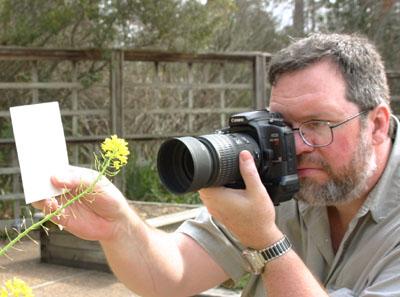

 Then Monday dawned clear and bright, promising to melt off the little snow that we’d received. In The Amityville Horror, visitors supposedly heard a voice saying, “Get out!” and while that book was a total crock of shit, I get much the same internal reaction when we have sunlight on snow. After doing a few shots around the yard, I scampered off down to the river to see what could be found there.
Then Monday dawned clear and bright, promising to melt off the little snow that we’d received. In The Amityville Horror, visitors supposedly heard a voice saying, “Get out!” and while that book was a total crock of shit, I get much the same internal reaction when we have sunlight on snow. After doing a few shots around the yard, I scampered off down to the river to see what could be found there.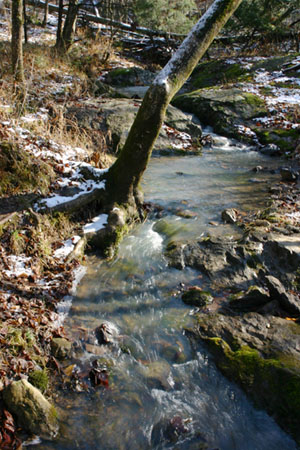 Even in winter at minimal tree foliage, the number of pines we have here reduces the amount of snow reaching the ground in wooded areas, so the river featured even less snow than the yard, and that was disappearing fast. I’ve had issues with camera batteries fading fast in cold weather, but the greater risk was from moisture, as snowmelt produced a light rain throughout the forest, constantly threatening the camera every time I selected a subject and paused. The reflections from snow and water drops also contributed to the difficult shooting conditions, since such specular highlights exceed the exposure latitude by a wide margin, creating flare, ghosts, and color-fringing. Then there’s the winter sun, sitting low in the sky throughout North America and thus casting long shadows, or getting into the lens if one faces the wrong way. Shadows are sneaky little things until you’re used to watching them, since they appear much less distinct to our eyes than they do in photos, and we readily ignore the darkness cast across our subject until we look at the images later and realize the dark patches aren’t contributing to the positive effect.
Even in winter at minimal tree foliage, the number of pines we have here reduces the amount of snow reaching the ground in wooded areas, so the river featured even less snow than the yard, and that was disappearing fast. I’ve had issues with camera batteries fading fast in cold weather, but the greater risk was from moisture, as snowmelt produced a light rain throughout the forest, constantly threatening the camera every time I selected a subject and paused. The reflections from snow and water drops also contributed to the difficult shooting conditions, since such specular highlights exceed the exposure latitude by a wide margin, creating flare, ghosts, and color-fringing. Then there’s the winter sun, sitting low in the sky throughout North America and thus casting long shadows, or getting into the lens if one faces the wrong way. Shadows are sneaky little things until you’re used to watching them, since they appear much less distinct to our eyes than they do in photos, and we readily ignore the darkness cast across our subject until we look at the images later and realize the dark patches aren’t contributing to the positive effect.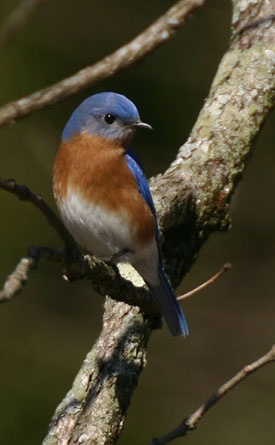 The conditions were also pleasing to the songbirds, who were raiding the yard for seeds and showing off to potential mates. Last fall during the migration period we had a cluster of Eastern Bluebirds (Sialia sialis) checking out the new bluebird box we’d put up much earlier, which had gone unoccupied last year, so we’re hoping they elect to use it this season. While I’d rather have a setting that looks much more natural, just their presence will provide lots of opportunities for behavior shots, and perhaps I can catch the young during fledging and flight practice.
The conditions were also pleasing to the songbirds, who were raiding the yard for seeds and showing off to potential mates. Last fall during the migration period we had a cluster of Eastern Bluebirds (Sialia sialis) checking out the new bluebird box we’d put up much earlier, which had gone unoccupied last year, so we’re hoping they elect to use it this season. While I’d rather have a setting that looks much more natural, just their presence will provide lots of opportunities for behavior shots, and perhaps I can catch the young during fledging and flight practice.
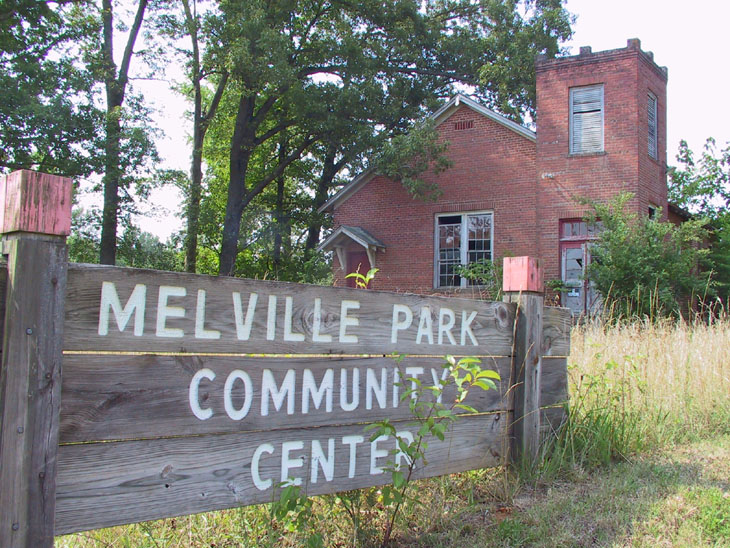
 One that few people register consciously, but virtually everyone knows instinctively, is lighting. Sunny days are very contrasty, with brilliant highlights but hard shadows. Overcast days have low contrast and no distinct shadows, but more importantly, the lighting color has gone much more blue because clouds filter out the red and yellow in sunlight – by extension, blue light seems cold to us. Alternately, light that is yellow, orange or red speaks of sunrise or sunset. We are also capable or reading light angles from the shadows, and get the same impressions.
One that few people register consciously, but virtually everyone knows instinctively, is lighting. Sunny days are very contrasty, with brilliant highlights but hard shadows. Overcast days have low contrast and no distinct shadows, but more importantly, the lighting color has gone much more blue because clouds filter out the red and yellow in sunlight – by extension, blue light seems cold to us. Alternately, light that is yellow, orange or red speaks of sunrise or sunset. We are also capable or reading light angles from the shadows, and get the same impressions. Remember that the mood evoked by an image does not have to be pleasant to be powerful, and there’s a certain appeal in photos that deny the constant ‘happy thoughts’ of the advertising that surrounds us, even conveying the idea that they are more real. The discarded condom, graffiti, and generally unkempt conditions all contribute to impression of an encounter that was less than romantic, as well as speaking volumes about the local inhabitants. A beer can, slightly crumpled, would have rounded out the concept nicely. The elements make up a story or situation in the viewer’s mind because they all have distinct associations, and while they start to appear clichéish when examined closely, we have to remember that clichés are actually made up of common elements. The more known they are, the more direct the message is to the viewer.
Remember that the mood evoked by an image does not have to be pleasant to be powerful, and there’s a certain appeal in photos that deny the constant ‘happy thoughts’ of the advertising that surrounds us, even conveying the idea that they are more real. The discarded condom, graffiti, and generally unkempt conditions all contribute to impression of an encounter that was less than romantic, as well as speaking volumes about the local inhabitants. A beer can, slightly crumpled, would have rounded out the concept nicely. The elements make up a story or situation in the viewer’s mind because they all have distinct associations, and while they start to appear clichéish when examined closely, we have to remember that clichés are actually made up of common elements. The more known they are, the more direct the message is to the viewer. This is often what separates an artistic photographer from a technically proficient one (I make no claims in either direction); it’s not simply an image, but a method of directing and even manipulating the viewer to react in a chosen way. Advertising photographers use this all of the time, often to some degree of clumsiness, and such images are carefully staged. But there are different impressions from the viewer, depending on whether or not they believe the image is candid. We accept the manipulation of ad photos as typical (if perhaps crass,) but resent the idea in any image that we think is supposed to be ‘real.’ If I told you that I placed the condom in position, you would think considerably less of the image, not to mention what you’d feel about someone who would have something like that handy [I didn’t, on either account, just for the record]. We appreciate the skill in finding the strong metaphor or story, but far less in staging it.
This is often what separates an artistic photographer from a technically proficient one (I make no claims in either direction); it’s not simply an image, but a method of directing and even manipulating the viewer to react in a chosen way. Advertising photographers use this all of the time, often to some degree of clumsiness, and such images are carefully staged. But there are different impressions from the viewer, depending on whether or not they believe the image is candid. We accept the manipulation of ad photos as typical (if perhaps crass,) but resent the idea in any image that we think is supposed to be ‘real.’ If I told you that I placed the condom in position, you would think considerably less of the image, not to mention what you’d feel about someone who would have something like that handy [I didn’t, on either account, just for the record]. We appreciate the skill in finding the strong metaphor or story, but far less in staging it. 